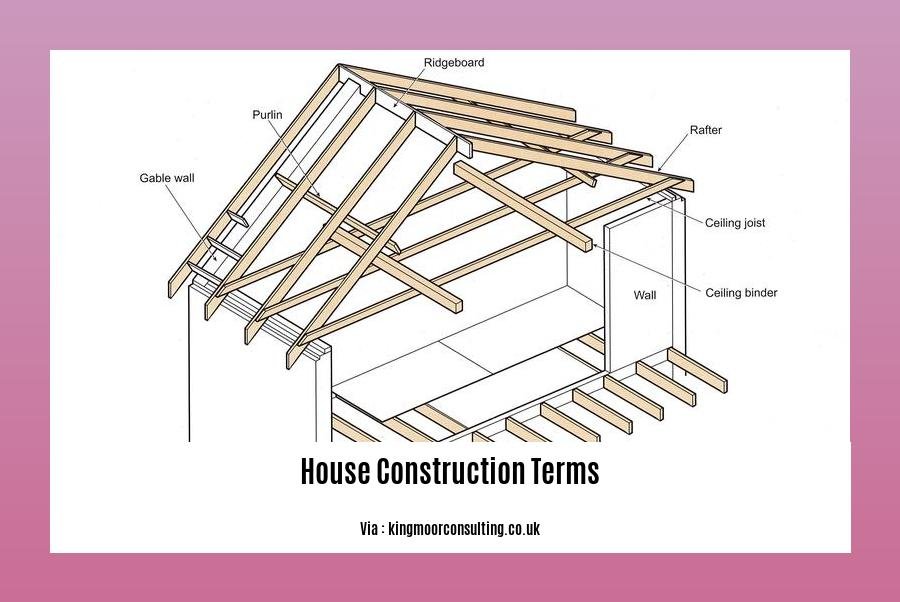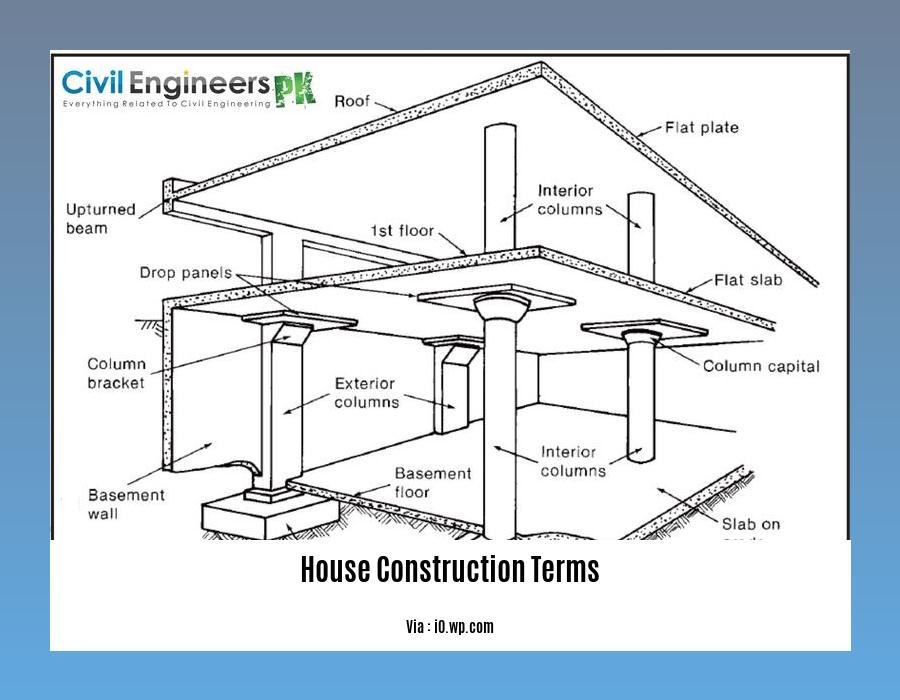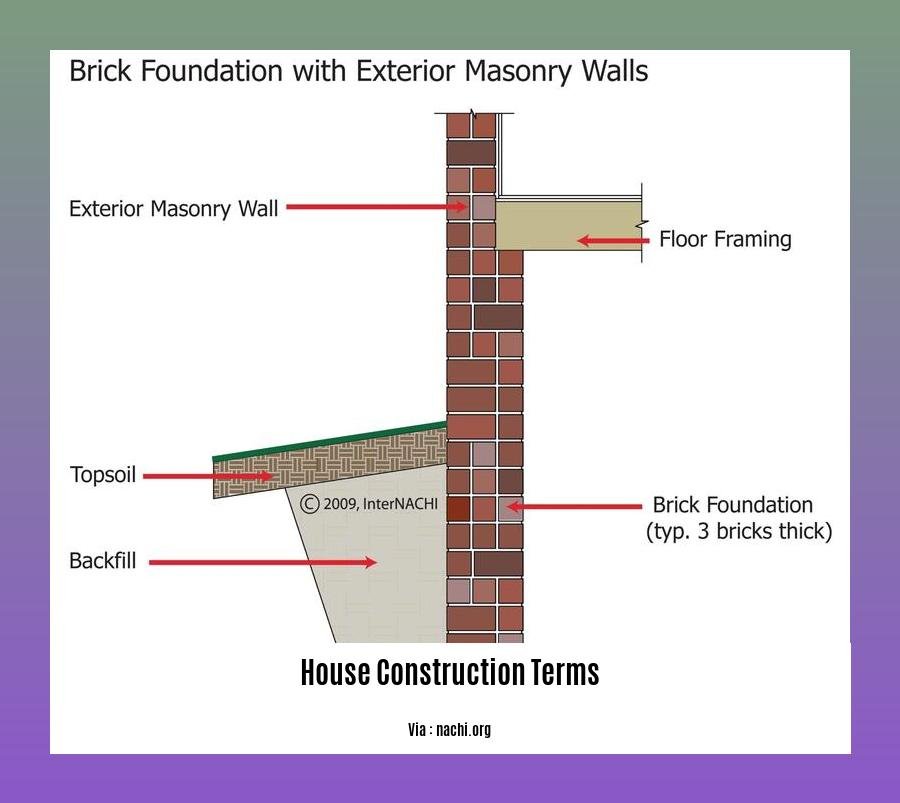Welcome to “A Comprehensive Guide to House Construction Terms: Demystifying the Language of Homebuilding”! As you embark on the journey of constructing your dream home, it’s crucial to navigate the maze of industry jargon. From foundation to finish, this guide will empower you with the knowledge to understand the language of homebuilding.
Key Takeaways:
- Baseboard: Molding along room edges at the base of walls.
- Base Cabinet: Cabinet on the floor with a countertop and toe-kick.
- Batten: Strip covering joints or used for decoration.
- Area: Measurement of space in square units.
- Backfilling: Filling a dug hole with material like soil or gravel.
- Blueprint: Detailed drawing outlining a construction project.
- Building Information Modeling (BIM): Digital model for planning building construction.
House Construction Terms: Understanding the Lexicon of Homebuilding

Navigating the realm of house construction can be a bewildering experience, especially if you’re not familiar with the industry jargon. Fear not, fellow homebuilders! Let’s embark on a linguistic journey to decipher the house construction terms that pepper our conversations.
Why Bother with Terminology?
Understanding these terms is crucial for effective communication with architects, engineers, and construction crews. It empowers you to participate meaningfully in discussions, interpret blueprints, and make informed decisions about your home’s construction. So, let’s dive right in!
Common House Construction Terms
-
Baseboard: This is the molding that graces the bottom of your walls, providing a splash of elegance and concealing any imperfections.
-
Base Cabinet: Unlike its aerial counterpart, this cabinet rests firmly on the floor, serving as the foundation for your countertops and providing ample storage.
-
Batten: These narrow wood strips are the unsung heroes of construction, bridging gaps between materials, adding decorative flair, and reinforcing structural integrity.
-
Area: If you’re wondering how much space a room has, this is the measurement you need. It’s simply the number of square units within those four walls.
-
Backfilling: As its name suggests, this involves filling up a hole in the ground with soil or gravel, ensuring stability and preventing erosion.
-
Blueprint: Think of this as the construction equivalent of a roadmap. This detailed drawing captures all the critical details of your home’s design and layout.
-
Building Information Modeling (BIM): This is the 21st-century version of a blueprint. It’s a sophisticated 3D digital model that allows everyone involved in the construction process to visualize the house in astonishing detail.
- house construction tips that can help you build your dream home.
- Explore new construction homes in toronto and find your perfect new home today.
- Find new construction plumbing companies that can help you with all your plumbing needs.
- Follow residential construction performance guidelines to ensure that your home is built to the highest standards.
House Construction Terms And Definitions

Embarking on the journey of house construction can be an exhilarating yet bewildering experience. Navigating the intricate world of construction jargon can feel like deciphering a foreign language. Fear not, for this comprehensive guide will demystify the language of homebuilding, equipping you with the knowledge to converse confidently with contractors and architects.
Key Takeaways:
- Terraced houses: Single-storey homes cozying up next to each other
- Duplex: Two-storey homes sharing a wall, offering privacy with a touch of togetherness
- Triplex: Three-storey homes accommodating three families under one roof
- Quadplex: Two-storey buildings sectioned into four distinct living spaces, providing ample room for extended families or multiple tenants
- Column: The sturdy vertical pillar bearing the weight of the structure
- Girder: The robust beam supporting smaller beams, akin to a backbone holding up ribs
- Baseboard: The molding gracing the bottom of walls, adding a touch of style and hiding imperfections
Residential Building Types:
- Terraced houses: Imagine a row of charming cottages side by side, each with its own front door and backyard.
- Duplex: Picture two homes stacked on top of each other, sharing a common wall, offering a sense of community while maintaining privacy.
- Triplex: Think of three apartments stacked vertically, providing separate living spaces for families or tenants.
- Quadplex: Imagine a two-storey building divided into four distinct living units, perfect for extended families or income-generating rental properties.
Building Definitions:
- Column: The sturdy pillar standing tall, transferring the weight of the structure down to the foundation.
- Girder: The mighty beam spanning across, supporting smaller beams and ensuring the roof doesn’t sag.
- Baseboard: The molding running along the bottom of walls, adding a touch of elegance while concealing any gaps or imperfections.
Mastering the Language of House Construction
Understanding these terms is not just about knowing the right words; it empowers you to:
- Communicate effectively with contractors and architects
- Understand blueprints and construction plans
- Make informed decisions about your home’s design and materials
- Troubleshoot potential issues and avoid costly mistakes
Remember, building a house is a collaborative effort, and a shared understanding of the construction language is the foundation for a successful project. Embrace this guide as your trusted companion, and let the language of homebuilding become your second nature.
Citation:
FAQ
Q1: What is the difference between a baseboard and a base cabinet?
A1: A baseboard is molding that runs along the bottom of a wall, while a base cabinet is a cabinet with a toe-kick and countertop that sits on the floor.
Q2: What is the purpose of a batten?
A2: A batten is a narrow wood strip used to cover joints or add decoration to a wall or other surface.
Q3: What is Building Information Modeling (BIM)?
A3: Building Information Modeling (BIM) is a digital 3D model that architects and engineers use to plan and design buildings.
Q4: What are the different types of residential buildings?
A4: Common types of residential buildings include terraced houses (single-story homes), duplexes (two-story semi-detached homes), triplexes (three-story homes), and quadplexes (two-story buildings divided into four living spaces).
Q5: What is a column in construction?
A5: A column is a vertical structural element that supports loads in a building or other structure.
- Embossed Backsplash Tile Kitchen: Add Texture And Style - December 22, 2025
- Ceramic Tile Backsplash Ideas for Your Kitchen Remodel - December 21, 2025
- Contemporary Kitchen Backsplash Ideas for a Stylish Home - December 20, 2025










